I’ve spent countless weekends teetering on a ladder, scooping slimy leaves out of my gutters, only to watch them clog again after the next storm. If you’re tired of that messy routine, Gutterglove gutter guards are a game-changer.
These stainless steel micro-mesh wonders promise to keep debris out while letting water flow freely, saving you time and protecting your home from water damage. After installing them myself, I’m convinced they’re worth every penny.
Let me walk you through my experience, the pros and cons, maintenance tips, and how Gutterglove stacks up against other brands.
My Journey With Gutterglove
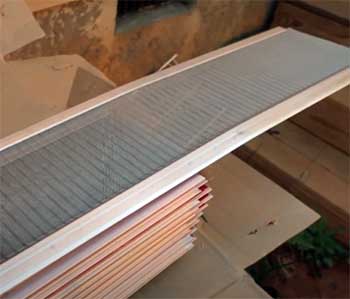
Picture this: it’s a crisp fall morning, and I’m staring at my gutters, overflowing with leaves and pine needles from the towering oaks in my yard.
I’d had enough of the annual gutter-cleaning saga, so I decided to give Gutterglove a try after hearing it praised for its micro-mesh design.
I ordered the 5-inch Gutterglove Pro kit from a home improvement store, and when it arrived, I was impressed by the sturdy aluminum frame and fine stainless steel mesh.
It felt like something built to last, not some flimsy plastic cover.
Installation was my first test. I’m no contractor, but I’m handy enough with a screwdriver and a ladder. The instructions were clear, and Gutterglove’s design made it straightforward to slide under my shingles and secure with the included screws.
It took me a weekend to cover my two-story home, and I only cursed a few times when dealing with a tricky corner. The system fit my K-style gutters perfectly, and I appreciated that it came in 4-foot sections—easy to handle without feeling overwhelmed.
After installation, the real test came with a heavy rain. I stood outside, half-expecting water to spill over, but Gutterglove handled it like a champ. Water flowed smoothly into the gutters, while leaves and twigs stayed on top, eventually blowing away in the wind.
Over the next few months, I noticed a significant drop in debris buildup. My gutters used to be a leaf graveyard; now, they’re practically spotless. Even during a windy spring with pollen and tiny seeds blanketing everything, Gutterglove kept most of it out.
I’m not saying it’s perfect—some fine grit still sneaks through—but it’s a massive improvement over my old, unguarded gutters.
The Benefits of Choosing Gutterglove
- Unmatched Durability
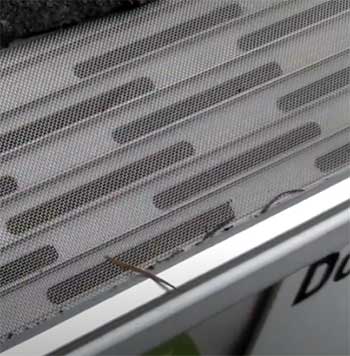
Let’s talk about why Gutterglove stands out.
First, its stainless steel micro-mesh and aluminum frame are built to take a beating.
Unlike plastic guards that crack under the sun’s relentless rays, Gutterglove doesn’t warp or rust.
I’ve had mine up for over a year, through scorching summers and icy winters, and they still look brand-new.
This durability gives me peace of mind knowing I won’t be replacing them anytime soon.
- Superior Debris Protection
The micro-mesh design is where Gutterglove shines. Those tiny 50-micron holes let water through but block everything from pine needles to shingle granules. I live in a wooded area, and my gutters used to clog weekly during fall.
Now, I rarely see anything but a few stray bits on top of the mesh, which usually blow away. It’s not just about keeping gutters clean; it’s about preventing water from pooling near your foundation, which can lead to costly repairs.
- Handles Heavy Rain Like a Pro
If you’ve ever watched water cascade over clogged gutters, you know the frustration. Gutterglove’s design ensures water flows into the gutter, not over it. During a torrential downpour last spring, I was amazed to see water channeling smoothly while debris stayed out.
The V-Bend technology lifts debris slightly, letting wind or rain clear it away. It’s like the system self-cleans, which is a huge win for someone like me who hates climbing ladders.
- Easy Installation for DIYers
I was nervous about installing gutter guards myself, but Gutterglove made it manageable. The system comes with screws or 3M tape, and the 4-foot sections are easy to maneuver.
You don’t need to be a pro to get these up, though a steep roof might require extra care. For me, it was a satisfying weekend project that saved me the cost of professional installation.
- Long-Term Warranty
Gutterglove offers a 10-year warranty, extendable to 25 years if you register the product. That’s a solid commitment. Knowing my investment is backed for decades makes me feel confident I made the right choice. Plus, the warranty covers defects, giving you extra security.
The Drawbacks of Gutterglove

- Higher Upfront Cost
Let’s be real—Gutterglove isn’t cheap. At around $15 to $20 per linear foot, it’s pricier than some DIY options.
When I bought my kit, I winced at the total, but I justified it by comparing it to the cost of repeated gutter cleanings or potential home repairs. Still, if you’re on a tight budget, the price tag might sting.
- Not Completely Maintenance-Free
I thought Gutterglove would eliminate gutter maintenance entirely, but that’s not the case. Fine debris like pollen or shingle grit can accumulate on the mesh, especially in areas with heavy tree cover.
I’ve had to brush off the guards once or twice a year to keep them performing at their best. It’s way less work than cleaning gutters, but don’t expect zero upkeep.
- Installation Challenges on Complex Roofs
While installation was straightforward for my standard K-style gutters, I can see how it might be trickier on steeply pitched roofs or older gutters. A friend with a slate roof struggled to slide the guards under his shingles without damaging them.
If your roof isn’t cooperative, you might need professional help, which adds to the cost.
- Occasional Fine Debris Buildup
The micro-mesh is fantastic at blocking most debris, but tiny particles can still get through or stick to the surface. In my case, I noticed some grit in the gutters after a year, though it wasn’t enough to cause clogs.
If you live near pine trees or have asphalt shingles, you might see similar buildup.
Maintenance Tips To Keep Gutterglove Performing
- Regular Inspections Are Key
You don’t need to baby your Gutterglove system, but checking it twice a year keeps it in top shape. I climb up in spring and fall to look for debris buildup or damage.
A quick glance can catch any issues before they become problems. If you spot leaves or grit on the mesh, don’t ignore it—address it early to maintain water flow.
- Brush Off Debris Gently
When debris collects on the mesh, a soft-bristle brush or leaf blower does the trick. I use a long pole with a brush attachment to avoid climbing too high.
Be gentle to avoid damaging the mesh. I’ve found that a quick sweep every six months keeps everything flowing smoothly.
- Check Downspouts for Blockages
Even with Gutterglove, downspouts can occasionally clog if fine debris sneaks through. I check mine annually by running a hose through them.
If water backs up, a plumber’s snake or high-pressure nozzle clears it out fast. It’s a small step that prevents bigger headaches.
- Watch for Ice and Snow
If you live in a snowy climate, ice can build up on the mesh during winter. I’ve noticed minor ice dams on my guards during harsh freezes, but they melted quickly.
To prevent issues, clear heavy snow with a roof rake, and ensure your attic is well-insulated to reduce ice formation.
- Professional Cleaning for Tough Cases
If you’re not comfortable on a ladder or have a multi-story home, hire a pro for maintenance. I’ve done it myself, but I know folks who pay $100-$200 every couple of years for a thorough cleaning.
It’s still cheaper than cleaning unprotected gutters multiple times a year.
How Gutterglove Compares To Other Brands
- Gutter Helmet: Surface Tension vs. Micro-Mesh
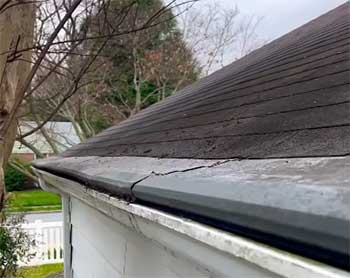
Gutter Helmet uses a nose-forward design that relies on surface tension to guide water into the gutter while deflecting debris.
It’s effective for large leaves, but I found it struggles with smaller debris like pine needles, which can stick to the surface.
During heavy rain, water sometimes skips over the edge, especially on steep roofs. Gutterglove’s micro-mesh, by contrast, captures finer particles and handles heavy rainfall better.
However, Gutter Helmet’s solid surface requires less frequent cleaning in low-debris areas, and its lifetime warranty is a strong selling point. Installation is professional-only, which can increase costs compared to Gutterglove’s DIY option.
- Amerimax Gutter Guard: Budget-Friendly but Basic
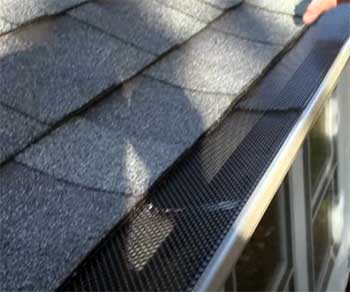
Amerimax offers affordable mesh and screen guards, like the Lock-In and Hoover Dam models, which are easy to install and cost significantly less than Gutterglove.
I tried an Amerimax screen guard years ago, and while it kept out larger leaves, smaller debris like shingle granules slipped through the larger holes.
The galvanized steel can rust over time, unlike Gutterglove’s stainless steel.
Amerimax is great for budget-conscious homeowners, but its lack of a post-installation warranty and less effective debris protection make Gutterglove a better long-term investment for heavy-debris areas.
- LeafFilter Gutter Protection: A Close Competitor
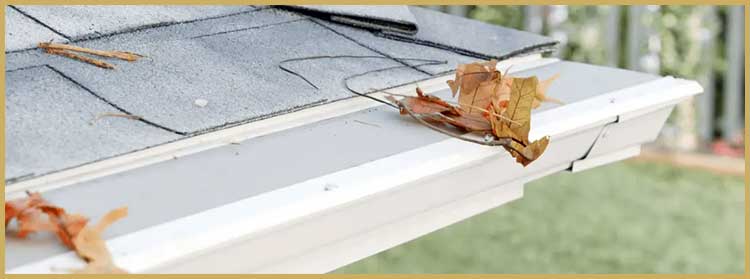
LeafFilter’s micro-mesh system is similar to Gutterglove’s, with a stainless steel mesh and a uPVC frame. I’ve spoken to neighbors with LeafFilter, and they rave about its ability to block tiny debris.
However, the plastic frame can warp under intense heat, a problem I haven’t seen with Gutterglove’s aluminum. LeafFilter’s lifetime transferable warranty is a big plus, but it requires professional installation, which bumps up the cost.
Gutterglove’s DIY option and slightly sturdier build give it an edge for those who want durability and flexibility.
- RainDrop Gutter Guard: Simple but Less Versatile
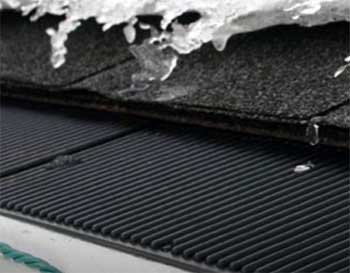
RainDrop’s vertical ribbed design is unique, using an angled aluminum guard to channel water while blocking debris.
A friend with RainDrop guards says they’re low-maintenance and effective for large leaves, but pine needles and fine grit can accumulate on the ribs.
Unlike Gutterglove’s micro-mesh, RainDrop doesn’t filter out the smallest particles, and its design can struggle with heavy water flow. It’s a solid choice for homes with minimal fine debris, but Gutterglove’s ability to handle diverse debris types makes it more versatile.
Frequently Asked Questions (FAQ)
Is Gutterglove Gutter Guard Any Good?
I can vouch for Gutterglove’s effectiveness. Its stainless steel micro-mesh blocks most debris while allowing water to flow freely, even in heavy rain. It’s durable, easy to install, and reduces maintenance significantly. That said, it’s not perfect—fine debris can accumulate, requiring occasional brushing. For most homeowners, it’s a reliable choice, especially in areas with heavy leaf fall.
What Is the Best Gutter Guard by Consumer Reports?
Consumer Reports has praised micro-mesh guards like Gutterglove Pro and LeafFilter for their ability to handle water and debris. Gutterglove often gets high marks for its DIY installation and durability, while LeafFilter is favored for professional setups. Both are top contenders, but your choice depends on whether you prioritize cost or professional installation.
Is Gutterglove the Same as Raptor Gutter Guard?
Gutterglove and Raptor are distinct products from the same company. Raptor uses a similar stainless steel micro-mesh but is designed for easier DIY installation with a clip-on system. Gutterglove Pro, which I use, is heavier-duty and often professionally installed. Both are effective, but Raptor is better for simpler setups.
What Is the Highest Rated Gutter Guard?
LeafFilter often takes the top spot in reviews for its fine mesh and lifetime warranty, but Gutterglove Pro is a close second, especially for DIYers. My experience with Gutterglove’s durability and performance makes it a strong contender, particularly if you want a balance of cost and quality.
Why Gutterglove Is Your Best Bet?
After a year with Gutterglove, I’m sold. It’s not just about skipping ladder climbs; it’s about protecting your home from water damage with a durable, effective system. The micro-mesh design, easy installation, and solid warranty make it a smart investment.
Whether you’re battling leaves or pine needles, Gutterglove delivers. Trust me, you’ll wonder why you didn’t install it sooner.
